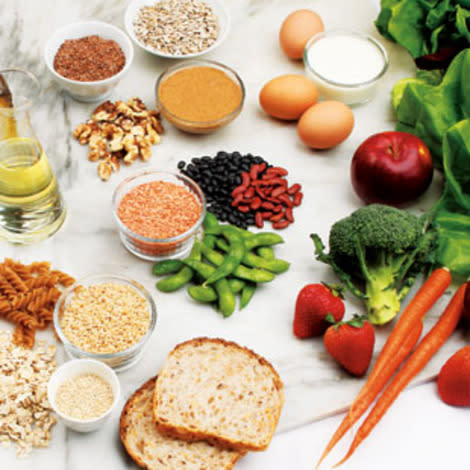4 Nutrients You Might Not Be Getting Enough Of

By Kerri-Ann Jennings, M.S., R.D. Associate Nutrition Editor for EatingWell Magazine
When the USDA came out with its Dietary Guidelines last year, it also published information on the so-called "shortfall nutrients" that Americans are not getting enough of. Are you getting enough of these four important nutrients? Here's what they are and how to make sure you're getting enough of them in your diet.
Must-Read: 6 Easy Ways to Meet the Dietary Guidelines
1. Fiber
Why You Need It: Fiber might sound dry and boring, but it's oh-so-important for your health. Eating enough fiber can help prevent type 2 diabetes, certain types of cancer and heart disease. Research also suggests that consuming fiber-rich foods might boost weight loss by helping you to feel fuller after you eat. But most of us eat only about half as much fiber as we should. Nutrition guidelines recommend that women eat 25 grams daily and men eat 38 grams daily; the average American consumes only about 14 grams.
How to Get It: Fiber is found in plant-based foods-the less processed they are, the more fiber they have. So, for instance a medium orange has 3 grams of fiber, but orange juice that has been stripped of pith and pulp has no fiber. You can increase your daily intake by making higher-fiber choices at every meal and snack-choose oatmeal (3 grams per 1/2 cup) for breakfast, snack on fruit (1 cup of raspberries delivers 8 grams) and almonds (4 grams per ounce) or veggies (1 cup of baby carrots has 3 grams) and hummus (3 grams per 1/4 cup), have a side salad (2 grams in 2 cups) and top it with beans (about 6 grams per half cup) or bulk up your sandwich at lunch with added veggies.
Must-Read: 7 Fiber-Rich Foods That Can Help You Lose Weight
2. Calcium
Why You Need It: Calcium is important for keeping bones and teeth strong, but it also helps muscles contract, nerves transmit signals, blood clot and blood vessels contract and expand. These functions are so important that your body will extract calcium from your skeleton if you aren't getting enough from your diet. Adults aged 19 to 50 need 1,000 mg per day; for women 51-plus (and men 70-plus), it's 1,200 mg daily.
How to Get It: It's possible to meet these recommendations through foods you eat-if you choose wisely. Dairy products are good choices (choose nonfat or low-fat to limit saturated fat), delivering between 300 mg (milk) to 490 mg (nonfat plain yogurt) per 1-cup serving. Kale and collard greens provide 94 mg and 266 mg per cup, respectively, and are absorbed well by the body. (Find out if you should take a calcium supplement.)
3. Potassium
Why You Need It: Potassium is critical for helping nerves transmit signals, muscles contract and cells maintain fluid balance inside and out. Newer scientific evidence demonstrates that potassium helps maintain normal blood pressure.
How to Get It: Potassium is found in many different fruits and vegetables. Probably the reason potassium is a shortfall nutrient is that Americans aren't eating enough fruits and vegetables-according to the CDC only 32.5% of adults eat 2 or more servings of fruit per day and only 26.3% eat the recommended 3 or more servings of vegetables per day.
Must-Read: 7 Ways to Sneak More Fruits & Vegetables Into Your Meals
4. Vitamin D
Why You Need It: Vitamin D is a fat-soluble nutrient that's important in bone building and has been linked with lower incidences of cancers and lower rates of immune-related conditions, such as type 1 diabetes and multiple sclerosis. The primary way we get vitamin D is by making it ourselves-UV rays from the sun help us to produce it. In the wintertime, in northern latitudes, many people start to run out of their internal vitamin D stores.
How to Get It: If you're not producing enough vitamin D from exposure to the sun, it is possible to get it from food. There are, however, very few foods that deliver D. Some foods, including milk, soymilk and many cereals, are fortified with vitamin D. Vitamin D is also found naturally in fatty fish, such as salmon, mackerel and sardines, and in egg yolks.
Recipes to Try: Try these vitamin-D-packed recipes for a delicious dose of D.
How do you make sure you get these important nutrients in your diet?
By Kerri-Ann Jennings

Kerri-Ann, a registered dietitian, is the associate editor of nutrition for EatingWell magazine, where she puts her master's degree in nutrition from Columbia University to work writing and editing news about nutrition, health and food trends. In her free time, Kerri-Ann likes to practice yoga, hike, bake and paint.
More from EatingWell:
